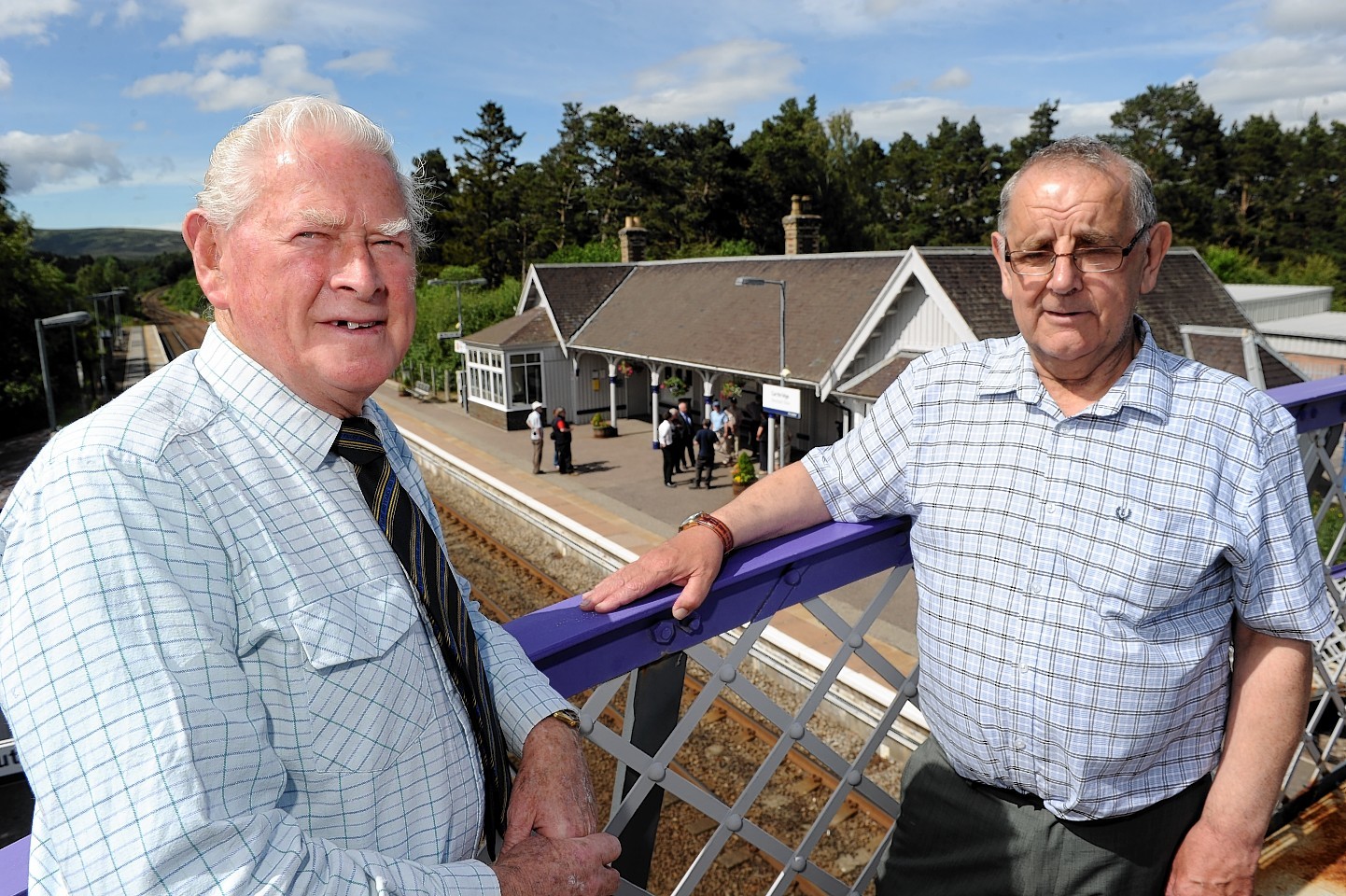Five people who died in a Highland railway disaster 100 years ago were remembered yesterday.
On June 18 1914 a bridge over the Baddengorm Burn near Carrbridge collapsed during a flash flood, causing part of a passenger train to fall into the swollen stream.
Two men and three women were drowned and 10 suffered shock or injury.
Those lost in the tragedy, which included the Inverness harbour master and the town clerk, were remembered yesterday by a minute’s silence on the platform of Carrbridge Station.
Iain Dunbar, Muir of Ord, grandson of the train driver that day, Murdo Ross, was present at the moving anniversary.
He said: “It is absolutely fantastic to be here today. It is overwhelming to see something being done but I never expected to see all this.
“This was one thing my grandpa never spoke about. He was deemed to be a hero for what he did but he never said that himself because he saw it as his job to help the passengers out.”
The accident happened after a torrential rainstorm had caused the narrow burn to flood. Some fallen tree trunks had wedged themselves up against a bridge further upstream, damming the water and causing it to break.
The debris from this then flowed downstream and wedged up against the wooden bridge carrying the railway, forming an even bigger dam. The official report into the disaster in July 10 1914, showed that the bridge then collapsed as the train crossed it.
According to the report, the passenger train had left Perth station at 11.50am before crashing at 3.24pm, leaving three of the carriages down in the gorge.
The report also noted that the bridge over the burn, built in 1893, was “of a very solid construction”, and that “the collapse of the bridge was due to no want of attention or care on the part of those responsible for its maintenance.”
David Ritchie, a member of Carrbridge and Vicinity Community Council, made a short speech at 3.24pm in bright sunshine to mark the occasion followed by a minutes’ silence.
He said: “Thank you all for coming on this memorable day. What a contrast it is now from that particular day.”
Robert MacKinnon, whose farm bordered the Baddengorm Burn, described in the official report in 1914 how the flood “looked like an 18in deep wave,” which spread across his grounds and washed off the soil.
Mr Ritchie said that a story was passed down to him that Mr MacKinnon had saved a woman stuck in a fence, who had floated into his field.
He added that, following the disaster, the bridge was repaired in just two to three weeks because it was needed for trains to carry coal to the north of Scotland for naval vessels at Scapa Flow as World WaR I was starting.
